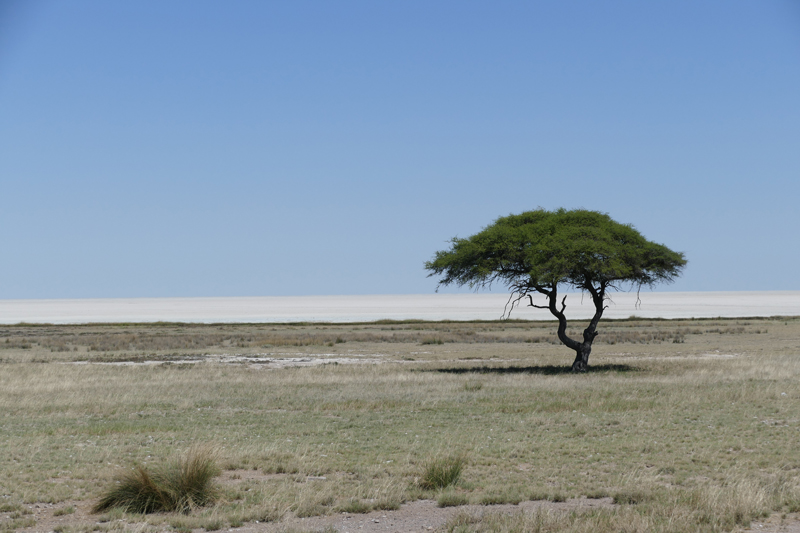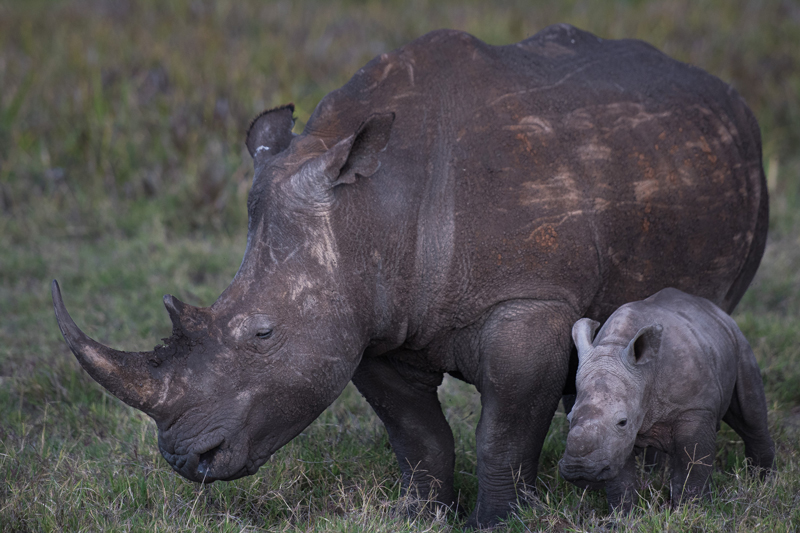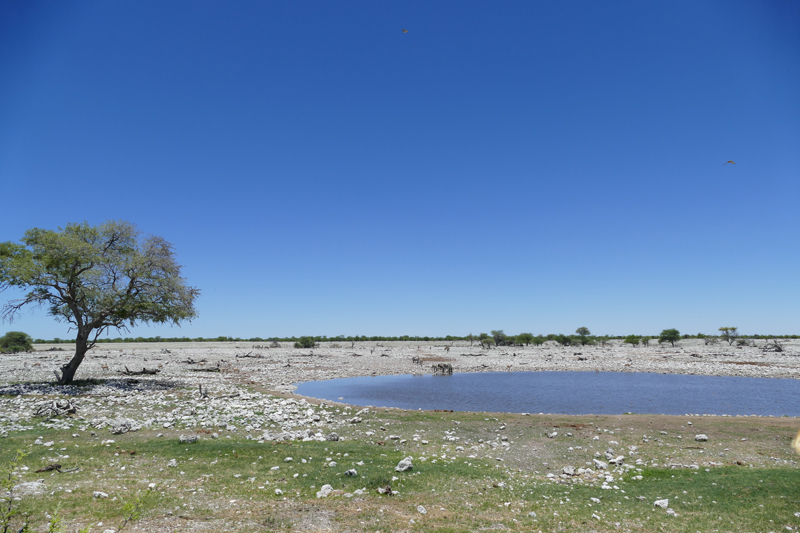Etosha National Park
Etosha National Park lies in the north of the country and is Namibia’s main wildlife area.
The 22,270 sq. kms. park was proclaimed a game reserve as early as 1907 (after years of being a hunter’s paradise), but it was not until 1952 that the park was developed. In 1958, it gained its National Park status. The famous pan, which covers an area of some 4,900 sq. kms. was discovered in 1815 and, according to geologists, is the remains of a huge inland lake, fed millions of years ago by the Kunene River, which changed course causing the lake to shrink to its present size.
During the rains, the pan does hold sufficient water to enable millions of waterfowl to descend onto it, including greater flamingo which breed here. The extensive habitat is home for some 340 species of birds.



The vegetation varies from the desolate sands of the pan to the surrounding grass plains (of salt-loving grasses and shrubs) to the deciduous bush (consisting mainly of mopane) and mixed woodland (wild figs, wild dates, maroela and tamboti) which covers much of the ground away from the pan. With the exception of buffalo, most of Africa’s large mammals are found, including healthy lion, elephant and rhino (black and white) populations. The area is also particularly good for greater kudu and black-faced impala.
The best way to game view through the park is to spend time visiting the various waterholes which are found south of the pan itself. These attract a wide range of wildlife species, and those with patience will reap the best rewards.
There are currently four accommodation restcamps and one luxury lodge within the park, all run by Namibia Wildlife Resorts (the National Parks body) and whilst Etosha is definitely worth visiting, it is extremely busy and you’ll not have a particularly ‘exclusive’ safari experience.
Adjoining the southern boundary of the park near the Andersson Gate entrance is the Ongava Game Reserve, a privately owned property which offers a more traditional game viewing experience. On the eastern boundary of the park, near the Von Lindequist Gate are numerous luxury lodges set on their own private concessions, but outside of the park itself they offer a limited safari experience.

